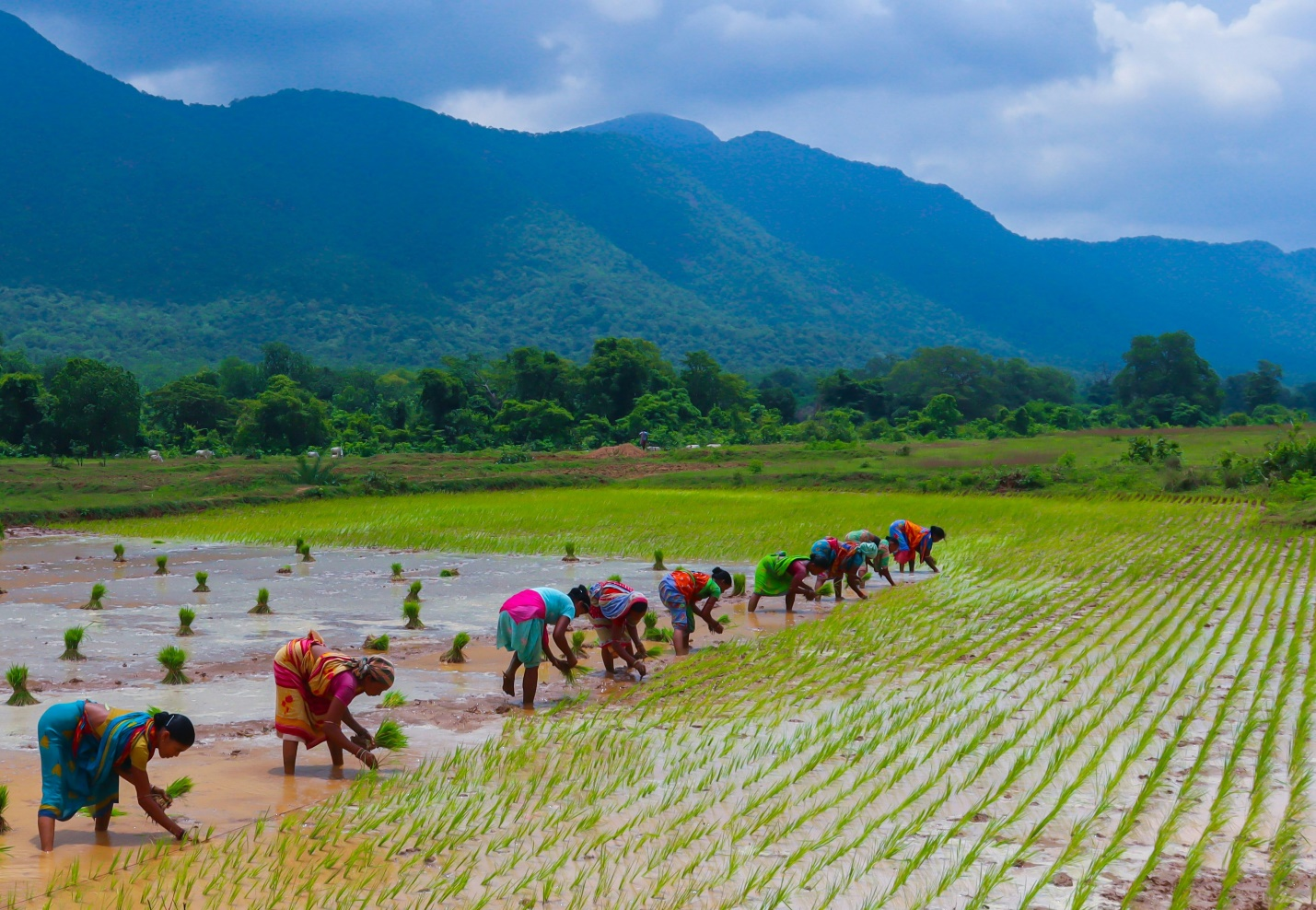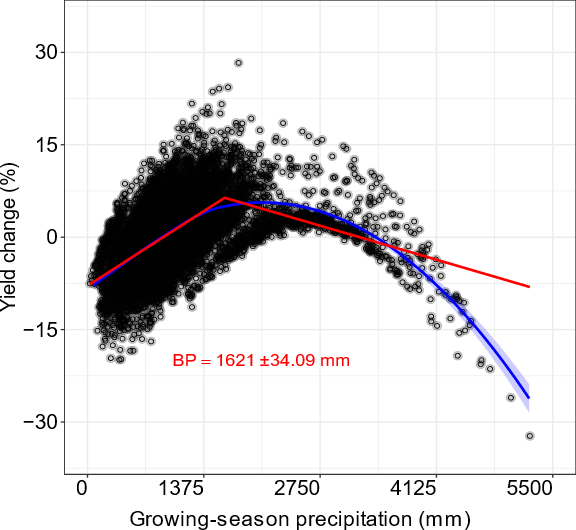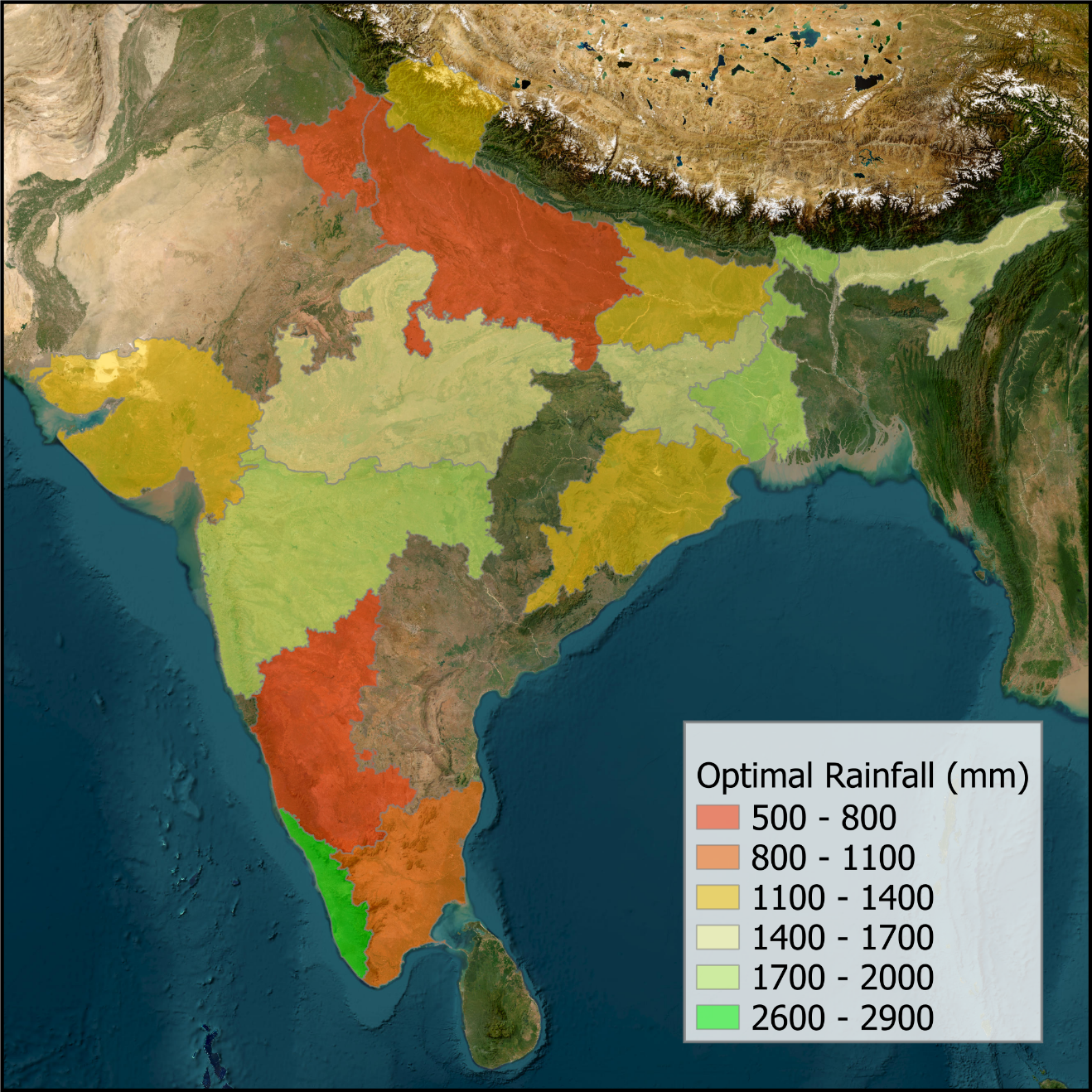Nonlinear response of monsoon rice yield to rainfall
Published in Earth & Environment, Sustainability, and Agricultural & Food Science

Background
Deficit and excessive rainfalls both harm monsoon-season rice yields. The response of crop yield to rainfall is nonlinear, but the optimal rainfall threshold across different regions and times is not well understood. Using historical rice production and climate data from 1990 to 2017, we identified the optimal rainfall point for peak Kharif rice yield in this study.

Kharif Monsoon Rice in India
India, along with many other countries in South Asia, experiences significant climatic variations, especially during the monsoon seasons influenced by the Indian Ocean. The summer monsoon, from June to September, provides 70-90% of the annual rainfall, crucial for agriculture. The El Niño-Southern Oscillation (ENSO) significantly affects monsoon precipitation and temperature, leading to variable rainfall patterns and impacting crop yields.
India's agriculture sector heavily relies on these monsoons. Kharif rice, planted during the monsoon season, accounts for 85% of the country's total rice production, making it vital for food security and the economy. India contributes nearly 20% of the world's total rice production annually.

Nonlinear Response of Rice Yield to Rainfall
The optimal rainfall threshold for monsoon rice yield in India is 1,621mm. Beyond this threshold, rice yield declines significantly. The threshold varies across 14 states, reflecting diverse climatic conditions and agricultural practices. Excessive rainfall could reduce rice yield by as much as 33.7%, while deficit rainfall 19%. For every 100 mm increase in rainfall beyond the optimal threshold, yield declines by 6.4 kg per hectare.
Extreme climate events, like those associated with ENSO, cause substantial fluctuations in rice production. ENSO events have led to notable yield losses during extreme weather years.

Implications for Agriculture and Food under Climate Change
These findings highlight the need for adaptive strategies to manage rainfall variability's impact on rice production. Farmers and policymakers can use this information to optimize water management, implement resilient agricultural techniques, and develop region-specific guidelines for rice cultivation.
Authors of the paper:
Arabinda Maiti, Md Kamrul Hasan, Srikanta Sannigrahi, Somnath Bar, Suman Chakraborti, Shanti Shwarup Mahto, Sumanta Chatterjee, Suvamoy Pramanik, Francesco Pilla, Jeremy Auerbach, Oliver Sonnentag, Conghe Song, Qi Zhang
Social Networks and Webpages:
- X (formerly Twitter):
- Conghe Song: @CongheSong
- Qi Zhang: @qzGeog
- Personal Webpage:
Follow the Topic
-
Communications Earth & Environment

An open access journal from Nature Portfolio that publishes high-quality research, reviews and commentary in the Earth, environmental and planetary sciences.
What are SDG Topics?
An introduction to Sustainable Development Goals (SDGs) Topics and their role in highlighting sustainable development research.
Continue reading announcementRelated Collections
With Collections, you can get published faster and increase your visibility.
Geology of the Moon
Publishing Model: Hybrid
Deadline: Jan 31, 2026
Drought
Publishing Model: Hybrid
Deadline: Mar 31, 2026



Please sign in or register for FREE
If you are a registered user on Research Communities by Springer Nature, please sign in